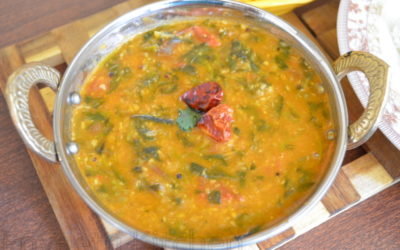The word roti is derived from the Sanskrit word rotika meaning ‘bread’. The Indian bread, is a staple food of the wheat growing regions of India, mostly in its Northern and Western belt. Although now, the roti is much in demand and relished even in the rice growing areas of the East and South states of India. This is because consuming rice has been much maligned by pharma companies, quick-buck-making nutritionists, health enthusiasts and doctors, as the no- no food for such lifestyle diseases as heart problems, blood pressure, obesity, diabetes, etc. The Roti is a round flatbread made from stone ground wholemeal flour (called atta), and water that is combined into a dough. Unlike its Western counterpart, the roti does not require a fancy oven, is unleavened (i.e. no raising agent like yeast or baking powder is used in its preparation) and therefore far more healthy than breads made in bakeries.
While wheat is a primary grain used for rotis, a wide variety of gluten-free grains and lentils such as grams, millets, jowar, bajra, maize, rice, amaranth, rajgir flours, are used as healthier alternatives to wheat flour, much to the delight of health conscious and vegan food enthusiasts. Rotis always need accompaniments such as vegetables, curries, pickles and the like to savour them.
There are a wide variety of flatbreads made of refined flour (maida) called naan, which are alien to Indian traditional cooking and do not find mention in the Bhagasastra.
Preparation
A roti dough is rolled out into flat round, square or triangular shapes, and cooked on a flat or slightly concave iron (or clay) griddle called a tawa. There are also a variety of rotis made using a traditional Indian oven called the tandoor, especially in the state of Punjab, where the flattened dough is stuck to the inside wall of the tandoor, where it bakes quickly at a high temperature. In everyday life and homes, the roti rolled out is called chapati and is made of whole wheat flour mixed into dough with water, edible oil or ghee and optional salt in a mixing utensil called a parat, and is cooked on the tava. Variations of the chapati include the phulka (in Punjab, Maharashtra, Gujarat) and maani in Sindhi.
Some roti recipes do use a home-made souring process called khameer, as also buttermilk, yoghurt, etc., for variety and healthier options.
Ingredients
The primary ingredients in rotis/pancakes are stone ground flour, salt (optional), and water to form the dough. Rotis are made into savories with the use of jaggery, coconut, etc.
Sirmari Roti

- ½ padi Milk
- 1¼ palam Khameer
- 5 palam Cream of Milk
- ½ padi Wheat Grits
- ¼ palam Salt
- veesam 1/16 padi Curd
- veesam 1/16 padi Milk
1. Combine milk and khameer and mix them well.
2. Combine cream of milk and wheat grits. Add salt to it.
3. Now add the milk and kameer mixture to the grits mixture. Mix it gently and knead it into a soft pliable dough.
4. Leave this dough for sometime without disturbing it. After some time it would have risen in volume. Then take a lemon size ball from the dough and roll it into a thin circle of half inch thickness.
5. Combine the curd and milk together and spread this mixture evenly on all the roti’s.
6. Place all the roti’s on a clean wet cloth and cover it with a wet cloth for 36 minutes.
7. After 36 minutes, they would have puffed up. Then make 2 to 3 holes on the center of the roti and cook it.
8. Sprinkle sour buttermilk on the roti till it is slightly red and has puffed up.
9. Once the center portion gets cooked put the roti on a live coal without smoke so that the edges get cooked.





0 Comments